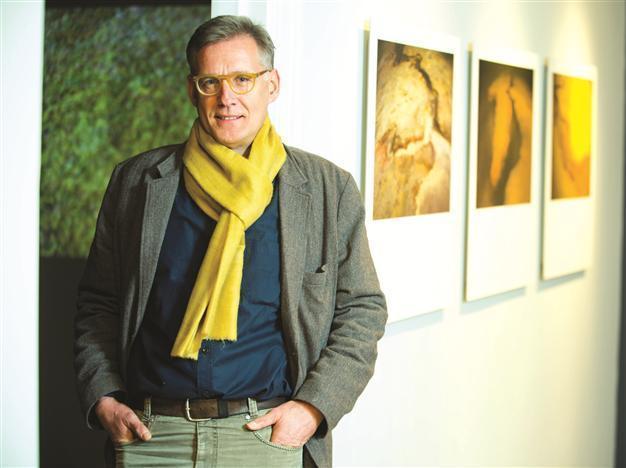Artist in search of an Istanbul without human element
ISTANBUL- Hürriyet Daily News

Proehl, German artist, focuses on capturing photographic images using a digital camera obscura, a modernized version of the primordial photography technique.
German artist Jochen Proehl is currently exhibiting his latest multimedia works presenting an Istanbul without the human element, at gallery CDA Projects in Istanbul.
The exhibition, titled “Unearthed,” opened on April 13 and runs through May 10. The Turkish version of the exhibition title may be translated as “an Istanbul without Istanbul.” In that sense, the two titles of the show complement one another. “I’m not interested in temporary topics like human life or history. I am interested in the resilient,” the artist has said.
Capruring images with camera obscuraProehl captures photographic images using a digital camera obscura, a modernized version of the primordial photography technique which lets light into the camera through a pin hole rather than the lens, and he digitally edits them so they look like images taken from outer space.
But most importantly Proehl first builds Istanbul sand models before photographing them, and thus presents an Istanbul cleared of all human factors.
“I first copied a map of Istanbul and then made cut-out paper models. In the second step, I shaped the sand using them and built sand models, which I then left for nature to do her work on so that they would look natural. In order not to be delayed by construction machines running over and ruining ‘my construction,’ I chose a deserted construction site. And it was in Germany, not in Istanbul,” Proehl says.
In Proehl’s usage “earth” carries the meaning of soil, from which he carves the Istanbul models he photographs. But on the whole, the exhibition plays well on the double meaning of the word when these pictures are given the air of satellite photos. Istanbul is modeled out of earth to be shown as if it was cut out from the face of the planet, or it was captured from a super terrestrial perspective.
The exhibition also features a video made of images captured again by the camera obscura technique and put one after the other to form “24 Frames in a Second.”
It includes a 23-plate work titled “Chthonic Garden,” which is meant to show how nature eventually dominates over the human element or, in this case, human intrusion. “This is a concrete wall and someone put pipes through it to let the rain water out. I guess the sand carried by the water somehow left remnants around the plastic pipes providing the environment for moss and other vegetation to grow. The work shows how nature immediately resurrects itself in these tiny cracks on a wall as soon as the soil meets the water.”
“Chthonic Garden” contains the least amount of artistic intervention in the exhibition, with Proehl simply documenting what is already there before his eyes. In that sense, the work contrasts with the rest of the show, underline “Unearthed’s” ultimate statement on the clash between nature and culture.
“I believe the earth is the main driving force of human civilization. We have always moved within a terrestrial circle of life. Whole mythologies and celestial religions share the presupposition that life comes out of soil and returns to it. This is what’s fascinating me in working with the earth,” Proehl says.
